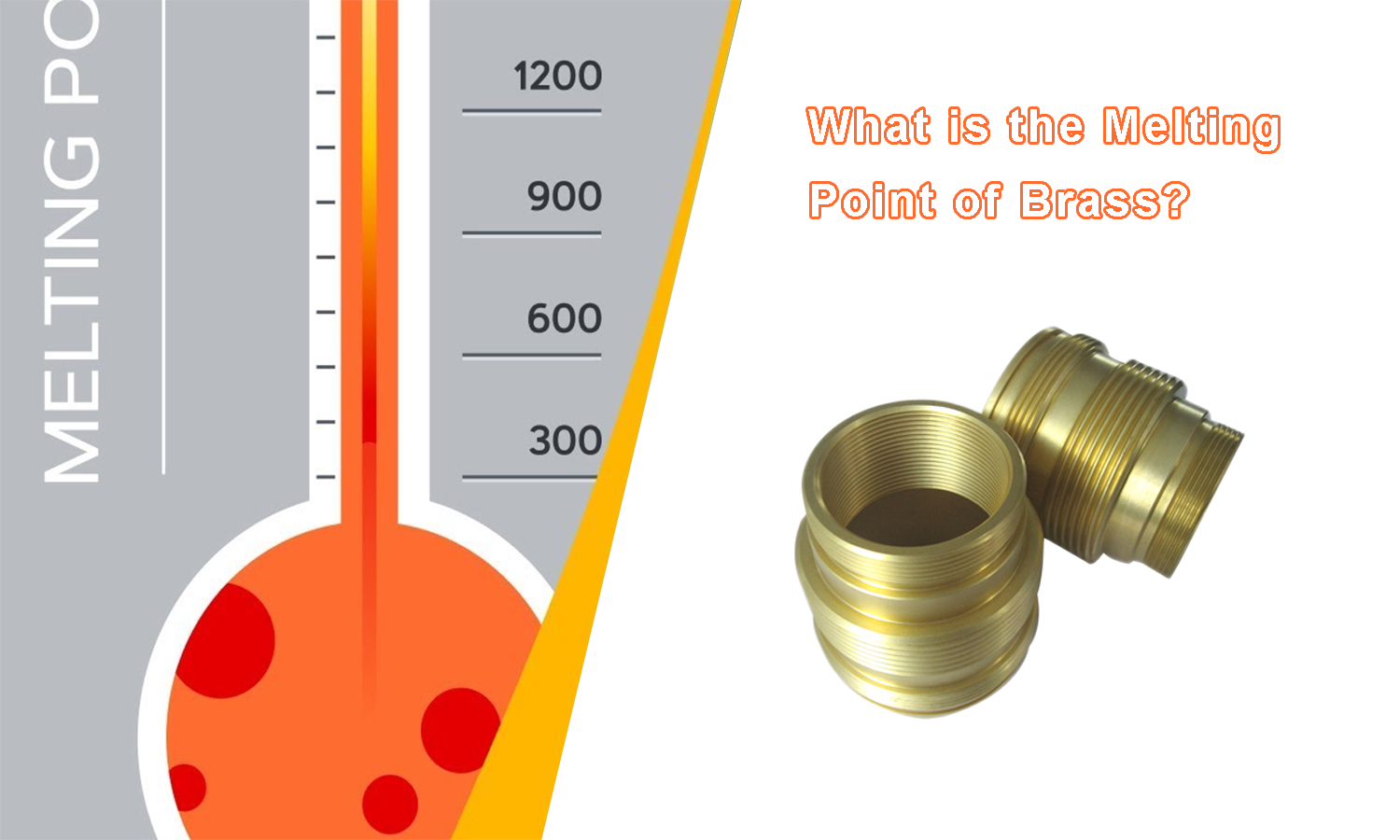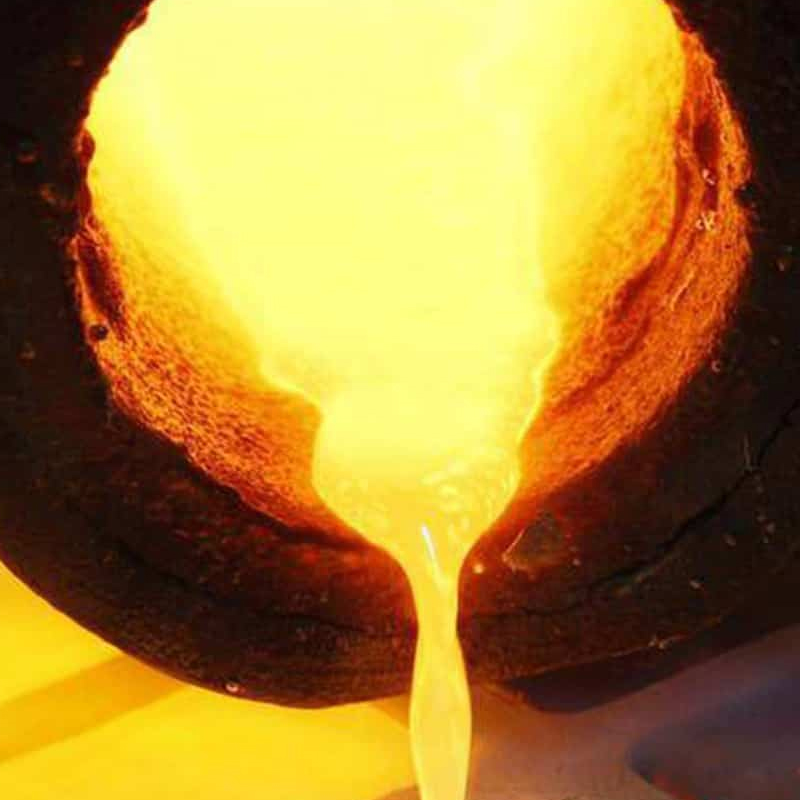What is the Melting Point of Brass?
 Jun 05,2024
Jun 05,2024

Brass is a widely used alloy primarily composed of copper and zinc. Brass is known for its good looks, strength, and easy machining. It is used in plumbing, electrical work, musical instruments, and decorations. Knowing the melting point of brass is key for casting, forging, and machining. This article will explore the melting point of brass, what affects it, and why it matters in different uses.
Melting Point of Brass
The melting point of brass is not fixed due to its variable composition. However, the melting point of most common brass alloys ranges between 900°C and 940°C (1652°F and 1724°F). This range can vary slightly depending on the specific composition of the brass alloy.

Composition of Brass
Before discussing the melting point of brass, it's important to understand its composition. Brass is an alloy, which means it is a mixture of two or more metals. The varying proportions of these elements result in different types of brass with distinct properties and melting points.
|
Alloy Type |
Copper (Cu) % |
Zinc (Zn) % |
Other Elements |
Characteristics |
|
Cartridge Brass (C260) |
70-80% |
20-30% |
Trace amounts of lead, tin |
Excellent cold workability, used for ammunition cases, hardware |
|
Yellow Brass (C268) |
65-70% |
30-35% |
Trace amounts of lead, tin |
High ductility and strength, commonly used in automotive parts |
|
Red Brass (C230) |
85% |
5-15% |
Tin (Sn) up to 0.05%, lead (Pb) up to 0.05% |
Good corrosion resistance, used in plumbing and electrical hardware |
|
Admiralty Brass (C443) |
70% |
28% |
Tin (Sn) 1%, arsenic (As) up to 0.15% |
Excellent corrosion resistance, used in marine applications |
|
Naval Brass (C464) |
59-62% |
37-40% |
Tin (Sn) 0.75-1%, iron (Fe) up to 0.2% |
High strength and corrosion resistance, used in marine hardware |
|
Muntz Metal (C280) |
60% |
40% |
Trace amounts of iron, lead |
High tensile strength, used for architectural applications |
|
Leaded Brass (C340) |
60-63% |
35-37% |
Lead (Pb) 1.5-2.5% |
Improved machinability, used in precision components |
|
Free Machining Brass (C360) |
61-63% |
35-37% |
Lead (Pb) 2.5-3.7% |
Superior machinability, used in fittings and fasteners |
Factors Influencing the Melting Point of Brass
The melting point of brass is influenced by its copper and zinc composition, presence of alloying elements like lead and tin, and the specific brass type. Higher zinc content generally lowers the melting point.
Copper-Zinc Ratio
The proportion of copper to zinc significantly affects the melting point. Higher copper content generally increases the melting point, while higher zinc content lowers it.
Additional Alloying Elements
The presence of other elements like lead, tin, aluminum, and nickel can alter the melting point. For example, the addition of tin can increase the melting point, while lead can lower it.
Manufacturing Process
The method used to produce the brass alloy can also impact its melting point. Different processes may result in varying distributions of alloying elements, affecting the overall melting behavior.
Common Brass Alloys and Their Melting Points
Common brass alloys include cartridge brass, yellow brass, red brass, and free machining brass. Their melting points range from moderately high to high, influenced by their specific copper and zinc content.

Yellow Brass (Cartridge Brass)
Contains about 70% copper and 30% zinc. Melting point ranges from 905°C to 915°C (1661°F to 1679°F).
Red Brass
Contains about 85% copper and 15% zinc, sometimes with small amounts of lead and tin. Melting point ranges from 990°C to 1010°C (1814°F to 1850°F).
Admiralty Brass
Contains about 70% copper, 29% zinc, and 1% tin. Melting point is approximately 925°C (1697°F).
Muntz Metal
Contains about 60% copper and 40% zinc. Melting point ranges from 899°C to 905°C (1650°F to 1661°F).
Significance of the Melting Point of Brass
The melting point of brass is a critical factor in various manufacturing and industrial processes. Understanding the melting point helps in selecting the appropriate alloy for specific applications and ensures successful processing. Here are some key areas where the melting point of brass is significant:

Casting
Casting involves pouring molten metal into a mold to form a shape. Knowing the melting point of brass is key to setting the right temperature for melting and pouring. Controlling the melting temperature helps brass flow smoothly, reduces defects, and ensures the final product meets standards.
Forging
Forging involves shaping metal using localized compressive forces, often at elevated temperatures. The melting point of brass determines the temperature range within which the alloy can be effectively forged. Working within this range ensures that the brass remains ductile and can be shaped without cracking or other issues.
Machining
Machining processes such as cutting, drilling, and milling are used to shape brass components to precise dimensions. Understanding the melting point of brass is important for selecting appropriate machining parameters. Excessive heat generation during machining can lead to melting or deformation of the brass, affecting the quality of the finished product.
Temperature Control
Knowing the melting point is crucial for processes involving high temperatures, such as casting and welding, ensuring the material does not melt or deform.
Tool Selection and Wear
Proper temperature management reduces tool wear and prolongs tool life, as excessive heat can lead to rapid tool degradation.
Material Performance
Ensuring the brass stays below its melting point during machining maintains its structural integrity and mechanical properties.
Dimensional Stability
Maintaining the correct temperature range prevents dimensional changes and ensures precision in machined components.
Soldering and Brazing
Soldering and brazing are joining processes that involve melting a filler metal to bond two metal pieces together. The melting point of the brass components and the filler metal must be carefully considered to ensure a strong and reliable joint. The filler metal should have a lower melting point than the brass to prevent damage to the base material.
Heat Treatment
Heat treatment processes such as annealing and stress relieving are used to alter the mechanical properties of brass. The temperatures used in these processes are typically below the melting point of brass but must be carefully controlled to avoid unwanted melting or distortion.
Applications of Brass and the Role of Melting Point
Brass is used in a wide range of applications due to its attractive appearance, corrosion resistance, and excellent machinability. Here are some common applications and the role of the melting point in each:
Plumbing
Brass fittings, valves, and pipes are widely used in plumbing systems due to their corrosion resistance and ease of installation. The melting point of brass is important for processes such as brazing, which is used to join brass components in plumbing systems.
Electrical
Brass is used in electrical connectors, terminals, and switches due to its good conductivity and durability. The melting point of brass ensures that these components can withstand the heat generated during electrical operation without deforming or melting.
Musical Instruments
Brass is a popular material for musical instruments such as trumpets, trombones, and saxophones. The melting point of brass is relevant during the manufacturing process, particularly in casting and soldering, to ensure the instruments have the desired acoustic properties and durability.
Decorative Items
Brass is used in jewelry, ornaments, and architectural elements for its beauty and ease of work. The melting point is key for casting and shaping these items to get the right look and strength.
Marine Applications
Brass is used in ship fittings, propellers, and underwater gear because it resists seawater corrosion. Its melting point helps make and maintain these parts in harsh marine conditions.
Conclusion
The melting point of brass is key for its use in many industries. Common brass alloys melt between 900°C and 940°C (1652°F to 1724°F). The copper-zinc ratio and other elements affect this. Knowing the melting point is vital for casting, forging, machining, soldering, and heat treatment. This ensures brass parts perform well in plumbing, electrical, musical instruments, decor, and marine applications. For brass machining services in China, trust Tuofa CNC Machining. Visit tuofa-cncmachining.com for more details.
 Tel/WeChat:
Tel/WeChat:  Email:
Email: 
 Home
Home
 Density of Titanium: Specific Gravity and Atomic Structure
Density of Titanium: Specific Gravity and Atomic Structure 







